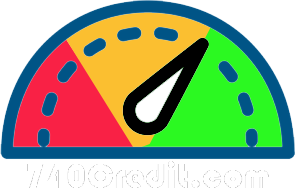HO-3 Insurance Policy & How It Compares
Our goal is to give you the tools and confidence you need to improve your finances. Although we receive compensation from our partner lenders, whom we will always identify, all opinions are our own. Credible Operations, Inc. NMLS # 1681276, is referred to here as “Credible.”
Homeowners insurance policies come in eight different levels, ranging from HO-1 to HO-8. These differ according to the building’s structure and even the type of insurance coverage the policy provides.
HO-3 is the most popular type of homeowners insurance policy.
Here’s what an HO-3 insurance policy entails and how it compares to other types of homeowners insurance coverage:
What is HO-3 insurance?
Most homeowners opt to purchase HO-3 homeowners insurance when choosing coverage for their home. An HO-3 policy provides coverage against damage from a number of perils for the structure of the home, as well as any personal belongings that you keep there.
HO-3 policies also offer personal liability coverage for the homeowner. This coverage pays for legal expenses if you or a family member injure someone on your property and that person sues.
Credible makes finding a great homeowners insurance policy easy. You can compare custom-fit options to find coverage that best suits your needs.
What does HO-3 insurance cover?
HO-3 insurance policies are designed to financially protect one of your biggest assets: your home. These policies include four primary types of coverage:
- Property damage coverage: The actual structure of your property — including your roof, foundation, walls, siding, and more — are covered against 16 possible perils with an HO-3 policy. These include fire and/or lightning, damage from windstorms and/or hail, smoke damage, vandalism or theft, volcanic eruptions, and more.
- Personal property coverage: Your policy also protects any personal belongings in your home. This includes things like your clothes, small appliances, furniture, and other valuables in the home and on the property. If these are destroyed or lost due to a covered peril, your coverage can help pay to replace the items.
- Personal liability protection: Homeowners insurance policies typically include personal liability protection as well. This coverage is designed to protect you and your family members if someone is injured on your property and files a lawsuit against you.
- Loss of use: If you’re unable to live in your home after a covered incident — such as a fire or smoke damage — your policy’s loss of use coverage will come into play. This coverage can be used to pay for temporary housing, such as a rental or hotel, as well as pay for certain living expenses, pet boarding, and laundry services.
Be sure to read your policy’s declaration page to see what coverages you have and the limits available to you.
Check Out: How to Buy Homeowners Insurance
What does HO-3 insurance not cover?
Homeowners insurance protects you from many things, but there are also things it doesn’t cover.
When it comes to HO-3 policies, here’s what your standard coverage typically excludes:
- Regular wear and tear: Over time, your home will require repairs, updates, and even the replacement of certain structures and systems. If these are the result of typical wear and tear, don’t expect your homeowners policy to cover the costs. A home warranty, on the other hand, might help you out.
- Damages due to neglect: Failing to maintain and care for your home, or maintain a safe environment, can lead to any number of issues with its structures or systems. If any losses occur as a result of this neglect, your HO-3 policy won’t cover them, even if those systems would have been covered under different circumstances.
- Code violations: If your home, or any system in your home, violates local ordinance or law, you may be required to renovate, repair, remodel, or even demolish part or all of the home. These losses aren’t covered by your HO-3 policy.
- Earth movement: If your home is damaged by the movement of earth below the property — either in the form of ground shifting, landslides, sinkholes, or even an earthquake — your standard HO-3 policy won’t cover the damages. In most cases, you’ll need to purchase separate coverage, such as an earthquake policy, if you live in an area prone to this sort of event.
- Water damage: If your sewer lines back up into your house, underground water sources leak into your basement, or floodwater rises up to your home’s level, the damages probably won’t be covered. Many carriers do offer flood insurance and/or water damage coverage as an additional option, however.
- Intentional losses: If the loss is related to an intentional action — such as arson or vandalism — committed by you or another person named on the policy, your policy won’t cover the damages.
- War and/or nuclear damages: If your home is damaged as a result of war or nuclear hazards, your typical HO-3 policy won’t do you much good.
- Government action: Any loss resulting from the government confiscation, seizure, or destruction of your home isn’t covered by an HO-3 homeowners policy.
Learn More: What Is Recoverable Depreciation in Home Insurance?
How much does an HO-3 policy cost?
The national average premium for an HO-3 policy is $1,272, or $106 per month, according to the National Association of Insurance Commissioners (NAIC).
With that said, the cost of an HO-3 policy depends on many individual factors, such as:
- Home size
- Location
- Home age
- How many floors the home has
- Exterior materials (brick, wood, siding, etc.)
- Updates or renovations
Your carrier will also consider the home’s value and cost to rebuild, as well as the policy limits you choose for personal belongings and liability.
Learn More: Home Insurance Replacement Cost vs. Market Value
How much does an HO-3 policy cost by state?
Homes in some states are more expensive to insure than others. This is because:
- Some states are more prone to natural disasters and other perils, such as wildfires or hailstorms.
- Some states have higher rates of crime, including vandalism, burglaries, and theft.
- Your coverage accounts for not only repairing your home, but the cost to rebuild it if it’s deemed a total loss due to damages. Labor and material costs can vary by state and city, resulting in higher or lower policy costs.
Here’s a look at the average cost of HO-3 insurance coverage in each state, based on annual and monthly premiums from the NAIC.
How does an HO-3 policy differ from other policies?
There are eight types of homeowners insurance policies, ranging from HO-1 to HO-8. Some cover specific types of property, while others offer more (or less) coverage for property owners.
Here’s a quick look at what each policy offers and how they differ from an HO-3:
| Policy form | Property type | What it covers | Best for |
|---|---|---|---|
| HO-1 (basic) | House | Limited named perils for structure and contents | Bare-bones coverage, where available |
| HO-2 (broad) | House | Greater number of named perils for structure and contents | More coverage than HO-1 but less than HO-3 |
| HO-3 (special) | House | Open perils for structure, named perils for contents | Most homeowners |
| HO-4 (contents broad) | Rental unit | Named perils for contents | Renters |
| HO-5 (comprehensive) | Higher-value house | Open perils for structure and personal property | Homeowners who want the most comprehensive coverage |
| HO-6 (unit-owners) | Condo or co-op unit | Named perils for contents and certain structural items | Condo or co-op unit owners |
| HO-7 (mobile home) | Mobile home | Open perils for structure, named perils for personal property | Mobile home owners |
| HO-8 (modified coverage) | Old, high-risk homes | Limited named perils for structure and personal property | Homeowners who don’t qualify for any other coverage |
HO-3 vs. HO-5 home insurance policies
HO-3 and HO-5 policies cover most of the same things. However, only HO-5 policies provide open-perils coverage for both your home and personal belongings.
Open-perils coverage means your insurance provider will protect you against any damaging event, as long as it’s not specifically excluded in your policy. Named-perils coverage only offers protection against the perils listed in your policy.
Here’s a look at how the two policies compare:
| HO-3 | HO-5 | |
|---|---|---|
| Property type | Home | Home |
| Building/structure coverage | Open-perils coverage | Open-perils coverage |
| Personal property coverage | Named-perils coverage | Open-perils coverage |
HO-3 vs HO-6 home insurance policies
| HO-3 | HO-6 | |
|---|---|---|
| Property type | Home | Condo/co-op |
| Building/structure coverage | Open-perils coverage | Named-perils coverage for interior structure |
| Personal property coverage | Named-perils coverage | Named-perils coverage |
Why do you need HO-3 insurance coverage?
Homeowners insurance coverage is one of those things that you probably shouldn’t skimp on. After all, few of us can afford to pay out of pocket to repair or rebuild our home following a disaster. Even a relatively minor issue — such as hailstorm damage to your roof — could be a devastating expense if you’re unprepared.
When you consider that HO-3 insurance policies also offer coverage for personal belongings, and even protection against personal liability claims, it’s easy to see why this coverage should be in the budget for all homeowners.
Check Out: What Is Personal Liability Coverage in Home Insurance?
How much HO-3 insurance do you need?
Many mortgage lenders will require some form of home insurance. Whether or not you choose an HO-3 policy or something more or less comprehensive is up to you. You’ll want to hold at least enough insurance to cover the total rebuild cost of your home should you experience a total loss. Depending on trends and your location, this coverage limit may be higher than your property’s current market value.
When determining how much coverage you need for personal belongings, consider what it would cost to replace everything in your home after, say, a fire. Think about furniture, clothes, books, electronics, accessories, bedding — if you had to start fresh, how much coverage would that take?
Lastly, think about your personal liability limits. Since this coverage protects your other financial assets if you’re deemed liable for someone else’s injuries or losses, you may want to get the most coverage possible. At the very least, consider personal liability limits that meet or exceed your current net worth.
Learn More: Everything You Need to Know About Home Insurance Claims
How to purchase an HO-3 home insurance policy
Buying an HO-3 home insurance policy is relatively simple — just follow these steps:
- Determine what type of coverage you want. Depending on the type of property you own, your budget, and your existing assets, one type of policy may make more sense than the others.
- Calculate your coverage needs. Most mortgage lenders will require a certain amount of dwelling coverage. You may also want a specific level of coverage for your personal belongings and even liability.
- Shop around. You can usually begin shopping around for coverage online, through many insurance carriers’ websites. There, you can often receive quotes to get a ballpark idea of premiums for your property, and start the buying process. You may also want to call any of your existing insurance carriers (like those for auto or renters insurance) to see if they offer bundle discounts.
- Choose your policy. Once you’ve found the right policy, you can move forward with purchasing coverage. If you’re buying a new home, your lender might require you to pay the first year’s premiums upfront.
- Conduct an inspection. Depending on the carrier and whether you’re buying coverage for a new or existing home, your insurance company may want to conduct a home insurance inspection as part of the approval process.
If you’re looking for a new homeowners policy, let Credible help. You can compare home insurance options from multiple carriers to find a policy that fits your needs.
Disclaimer: All insurance-related services are offered through Young Alfred.




